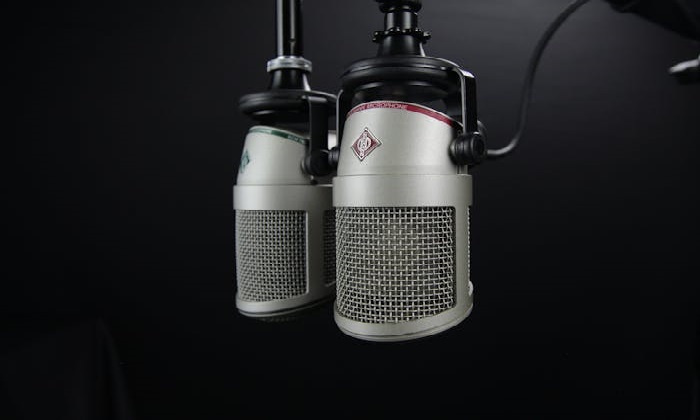Choosing the right microphone is crucial for achieving clear, professional-quality audio in any setting. Whether you’re setting up a conference room, recording a podcast, streaming live events, or managing a lecture hall, the wrong microphone can lead to poor sound, frustration, and reduced engagement.
With so many types of microphones available—each with different features, designs, and applications—it can be overwhelming to make the right choice. This guide breaks down the essential factors to consider when selecting the perfect microphone.
1. Understand the Purpose
The first step in choosing a microphone is understanding your intended use:
Voice communication: Video conferencing, webinars, or corporate meetings
Music recording: Vocals, instruments, or studio production
Live events: Public speaking, performances, or houses of worship
Streaming or podcasting: Gaming, commentary, or online broadcasts
Your application determines the type of microphone, pickup pattern, and connectivity options best suited to your needs.
2. Know the Microphone Types
Microphones can be broadly categorized into dynamic, condenser, and ribbon types. Each has unique characteristics:
a) Dynamic Microphones
Durable and versatile
Handles high sound pressure levels without distortion
Ideal for live performances, speeches, and noisy environments
Less sensitive than condenser microphones
Dynamic microphones are excellent for stage use and situations where durability is important.
b) Condenser Microphones
Highly sensitive with wide frequency response
Captures subtle details and nuances
Ideal for studio recording, vocals, podcasts, and broadcast
Requires external power (phantom power)
Condenser microphones are best for controlled environments where audio fidelity is a priority.
c) Ribbon Microphones
Known for warm, natural sound
Highly sensitive and fragile
Ideal for studio vocals, instruments, and broadcast
Often used in professional recording environments
Ribbon microphones are typically for experienced users seeking high-quality audio in studio settings.
3. Choose the Right Pickup Pattern
The pickup pattern determines the direction from which the microphone captures sound. Common patterns include:
Cardioid: Captures sound primarily from the front; reduces background noise
Omnidirectional: Captures sound from all directions; useful for roundtable discussions or ambient recording
Bidirectional/Figure-8: Picks up sound from front and back; ideal for interviews or duet recording
Supercardioid/Hypercardioid: Narrower front focus, reduces side noise; great for live events and noisy environments
Choosing the right pattern ensures clarity and minimizes unwanted background noise.
4. Decide Between Wired and Wireless
Microphone connectivity impacts flexibility and convenience:
Wired microphones: Reliable, no interference, ideal for permanent setups
Wireless microphones: Greater mobility, ideal for presenters, performers, or large spaces
Wireless systems require careful frequency management to avoid interference, especially in environments with multiple devices.
5. Consider the Environment
The environment where the microphone will be used affects the choice:
Conference rooms: Cardioid or boundary mics capture multiple speakers with minimal echo
Classrooms: Ceiling or lapel microphones can provide clear audio for students and recordings
Live stages: Dynamic microphones with robust construction handle loud volumes and movement
Recording studios: Condenser or ribbon mics capture detailed sound in controlled acoustic spaces
Selecting a microphone suited to the environment ensures optimal performance.
6. Think About Frequency Response
Frequency response refers to the range of sound a microphone can capture. Consider:
Voice applications: A frequency range of 80 Hz to 15 kHz captures natural speech
Music applications: Wider frequency range (20 Hz–20 kHz) captures instruments and vocals accurately
Live events: Tailor frequency response to minimize feedback and distortion
Matching frequency response to your use case ensures balanced and clear audio.
7. Evaluate Sensitivity and SPL Handling
Sensitivity: Determines how well the microphone picks up quiet sounds
SPL (Sound Pressure Level) Handling: Measures how loud a sound the mic can handle before distortion
For loud environments, choose microphones with high SPL tolerance. For subtle voice recording, higher sensitivity microphones capture more detail.
8. Connectivity Options
Check the microphone’s output type to ensure compatibility with your equipment:
XLR connectors: Standard for professional audio; requires mixer or audio interface
USB microphones: Plug-and-play with computers; ideal for streaming and home recording
TRS/TRRS: Often used with cameras or portable recorders
Proper connectivity ensures seamless integration with your existing AV systems.
9. Durability and Build Quality
Especially for live events or mobile setups, microphone durability is critical:
Metal housings withstand drops and rough handling
Moisture-resistant designs are beneficial for outdoor or long-term use
Replaceable windshields or pop filters extend lifespan
Investing in durable microphones saves money and prevents interruptions during events.
10. Partner with Professional AV Consultants
Choosing the right microphone can be complex, particularly for large meeting rooms, auditoriums, or hybrid learning environments. AV Consultants, provide:
Expert advice on microphone types, placement, and integration
Acoustic analysis of rooms to optimize sound pickup
Installation and calibration to ensure consistent audio quality
Ongoing support and maintenance
Professional guidance ensures your microphone system delivers clear, reliable sound for every situation.
Conclusion
Selecting the perfect microphone requires careful consideration of purpose, environment, microphone type, pickup pattern, connectivity, frequency response, and durability. Whether it’s for live events, recording studios, classrooms, or conference rooms, the right microphone enhances audio clarity, reduces frustration, and improves overall communication.
Partnering with professional Audio Video Consultants ensures you get a microphone system tailored to your needs, delivering professional-quality sound that supports effective communication, collaboration, and engagement in any setting.


